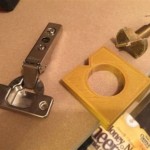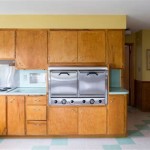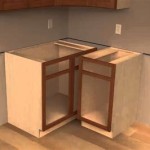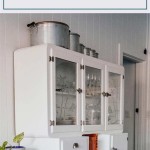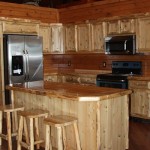Moulding on Kitchen Cabinets: Essential Aspects for a Sophisticated Upgrade
Kitchen cabinets form the backbone of any kitchen design. Their functional and decorative attributes significantly impact the overall aesthetic and functionality of the space. Adding moulding to kitchen cabinets can elevate their appearance and create a distinct architectural style.
### Types of MouldingsMouldings come in various shapes and sizes, each with its own unique effect. Here are some popular types:
- Crown Moulding: Installed at the top of the cabinets, it adds height and grandeur.
- Light Rail Moulding: Placed below the crown moulding, it creates a separate layer of visual interest.
- Valance Moulding: Extends over the cabinet doors, providing an elegant accent.
- Base Moulding: Installed at the bottom of the cabinets, it conceals gaps and enhances stability. li>Rope Moulding: Features a twisted rope-like design, adding texture and a touch of whimsy.
Incorporating moulding into your kitchen cabinet design offers several advantages:
- Enhanced Aesthetics: Mouldings add visual depth, dimension, and character to the cabinets, transforming them into a focal point.
- Increased Value: Well-executed moulding can significantly increase the perceived value of your kitchen.
- Architectural Interest: Mouldings create a sense of architectural detail, mimicking the intricate designs found in traditional homes.
- Improved Functionality: Certain mouldings, such as light rails, can provide additional lighting, enhancing the task-oriented areas of the kitchen.
When selecting moulding for your kitchen cabinets, consider the following factors:
- Cabinet Style: Choose mouldings that complement the style of your cabinets, whether traditional, contemporary, or transitional.
- Kitchen Theme: Mouldings should align with the overall kitchen theme, such as farmhouse, modern, or coastal.
- Cabinet Height: Taller cabinets may require taller mouldings to maintain a balanced proportion.
- Spacing: Ensure there is enough space between the mouldings and the cabinet doors to allow for proper opening and closing.
If you are comfortable with DIY projects, you can install cabinet mouldings yourself. Here are a few tips to ensure a professional-looking finish:
- Use a miter saw for precise cuts.
- Secure the mouldings with nails or adhesive, depending on the type.
- Caulk any gaps between the mouldings and cabinets.
- Prime and paint the mouldings to match the cabinet color.
Adding moulding to your kitchen cabinets is a relatively simple yet impactful way to transform your kitchen's aesthetics. By carefully considering the type, size, and style of mouldings, you can create a stunning and functional space that will enhance your enjoyment of your kitchen for years to come.

How To Install Crown Molding On Cabinets Young House Love

Adding Moldings To Your Kitchen Cabinets Remodelando La Casa

Decorative Molding Timberlake Cabinetry

Diy Kitchen Cabinet Upgrade With Paint And Crown Molding

9 Molding Types To Raise The Bar On Your Kitchen Cabinetry

3 Ways To Enhance Your Kitchen With Crown Molding

11 Kitchen Cabinet Crown Molding Ideas For Your

Adding Crown Moulding To Wall Kitchen Cabinets Momplex Vanilla Ana White

How To Add Trim And Paint Your Laminate Cabinets

Kitchen Cabinet Crown Molding Reality Daydream
Related Posts


